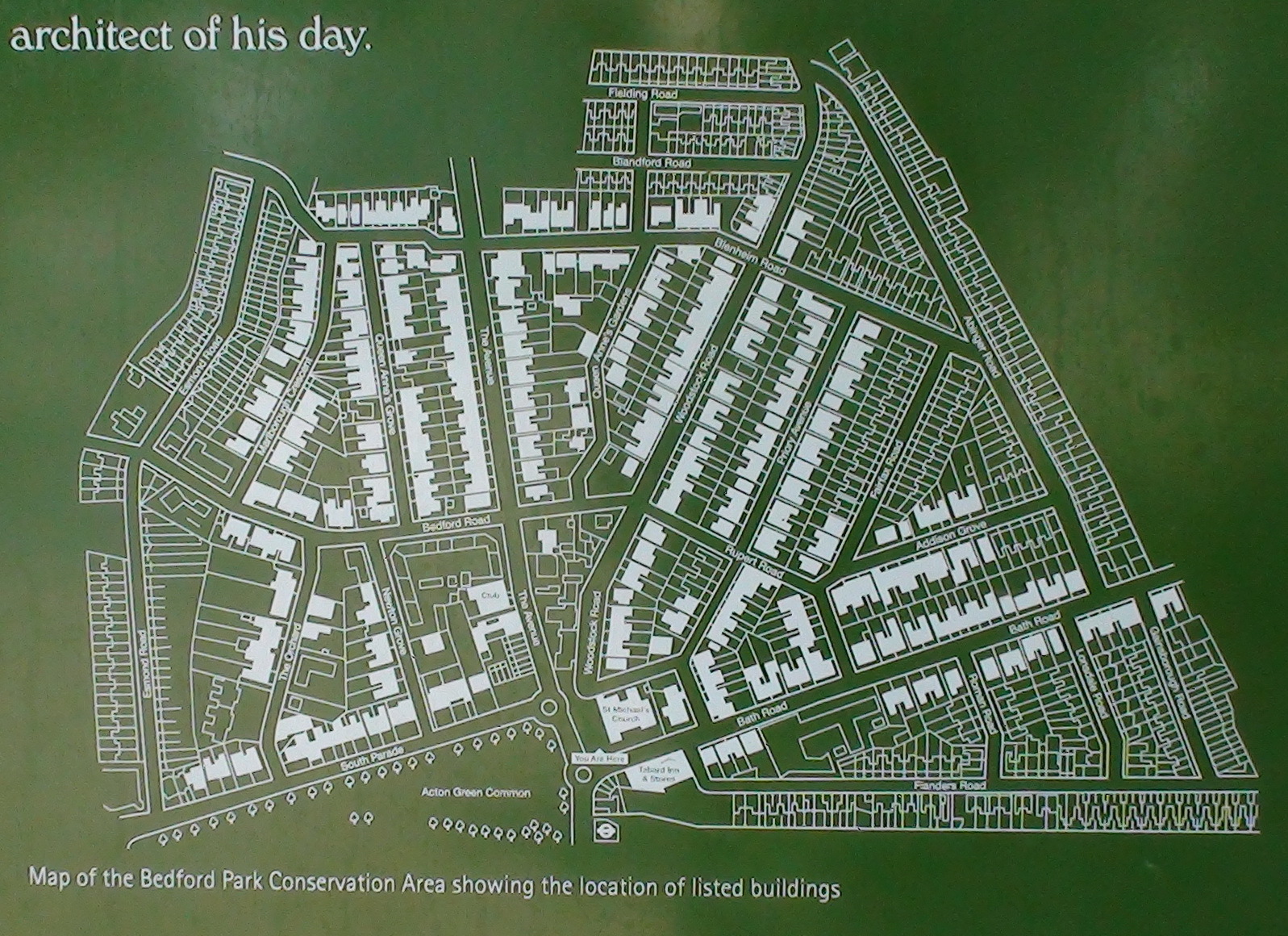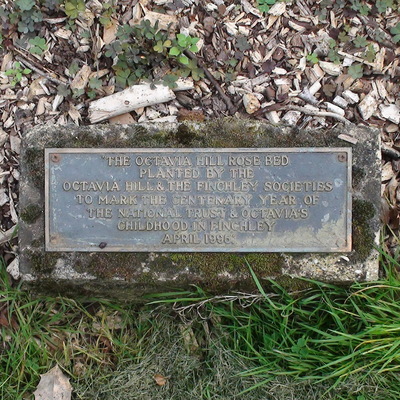Erection date: 21/6/2014
{The text on the front of the panel reads:}
You are standing at the heart of Bedford Park, described by John Betjeman in 1960 as "the most significant suburb built in the last century, probably the most significant in the Western world". To your right is St Michael and All Angels church, behind you the Tabard Inn and the former local Stores. Ahead of you in The Avenue is the building that housed the Social Club. These amenities formed the focus of the community that grew up here from 1875, when visionary developer Johnathan Carr started to build the distinctive homes that make up Bedford Park. He planned a new kind of estate, in which aesthetically acceptable houses at inexpensive rents would be set in an informal, village-like layout. The houses were designed in the Queen Anne style : the first by E. W. Godwin, the bulk by R. Norman Shaw - the most successful architect of his day.
Bedford Park pioneered concepts later used and formalised by the designers of the Garden City movement. It represents a turning point in the architecture and layout of suburban housing which flowered in the first half of the 20th century. After some of the finest houses were demolished, the Bedford Park Society was founded in 1963 with Betjeman as its first patron, to protect the amenity of the area. In 1967 356 houses were listed Grade 2, protecting their historic features internally and externally for future generations.
This sign is in memory of Leonard and Freda Darke, founding members of the Bedford Park Society.
On the back of the panel 8 Bedford Park men are featured, each with a paragraph of text, and, for some, a small portrait image. We’ve created a page for each of these in our Subjects commemorated list and, since the panel text is good, we’ve copied it onto the appropriate pages.
Since the panel fails to quote it we must give the Ballad of Bedford Park from St James Gazette of 1881:
Thus was a village builded
For all who are aesthete
Whose precious souls it fill did
With utter joy complete.
Site: Bedford Park panel (1 memorial)
W4, The Avenue, St Michael & All Angels Church












Comments are provided by Facebook, please ensure you are signed in here to see them